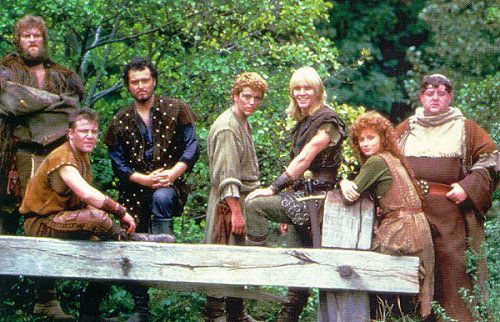

PRobin Hood is not a lone outlaw but the leader of a trained band of fighters. And it's a good thing too. Robin's a reckless lad sometimes. He'll sneak into Nottingham once too often and get caught by the sheriff. Or he'll pick a fight with the wrong traveller.
And when the going gets rough, Robin blows three great blasts on his horn. That's when his Merry Men appear. Some say they are a small group of outlaws. Others say there were 140 or 150 Merry Men in Robin's band. Some tales even say there were 300 stout fellows in the band. Whatever the case, if it weren't for these sturdy yeomen (and yeo-women), Robin wouldn't last a week.
Contact Us